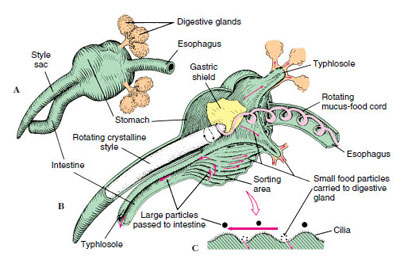
Whelks
Whelks Family Buccinidae (True Whelks)
Waved Whelk or Common Whelk Buccinum undatum

The waved whelk, or common northern whelk, can be found in the North Atlantic along the coastline of North America from New Jersey northward.
Waved whelks may occasionally be found in Barnegat Bay but its primary habitat mainly soft bottoms in the sublittoral zone, and occasionally on the littoral fringe, where it is sometimes found alive at low tide.
It does not adapt well to life in the intertidal zone, due to its intolerance for low salinities. If exposed to air, it may crawl from its shell, risking desiccation (extreme dryness).
The waved whelk is a carnivore, and feeds on crabs, polychaete worms, bivalves, and dead organisms.
Water enters the siphon which is pointed in the direction of the current and the osphridia‘s chemoreceptors detect for prey.
The whelk moves to the prey using its foot, and uses it to grasp the shell in the case of a crab or bivalve.
The radula is extended from the mouth and if the prey has a shell, the radula’s teeth are used to drill a beveled hole through which the radula can extract the body matter. Radular teeth of whelks are solid and do not contain poison as in the case of cones, but the tongue may confer a secreted acidic mucus to the shell that is being bored. Digestion is primarily extracellular and takes place within a digestive gland at the end of a long esophagus that empties into a stomach
Knobbed Whelk
Channeled Whelk
Lightning Whelk


